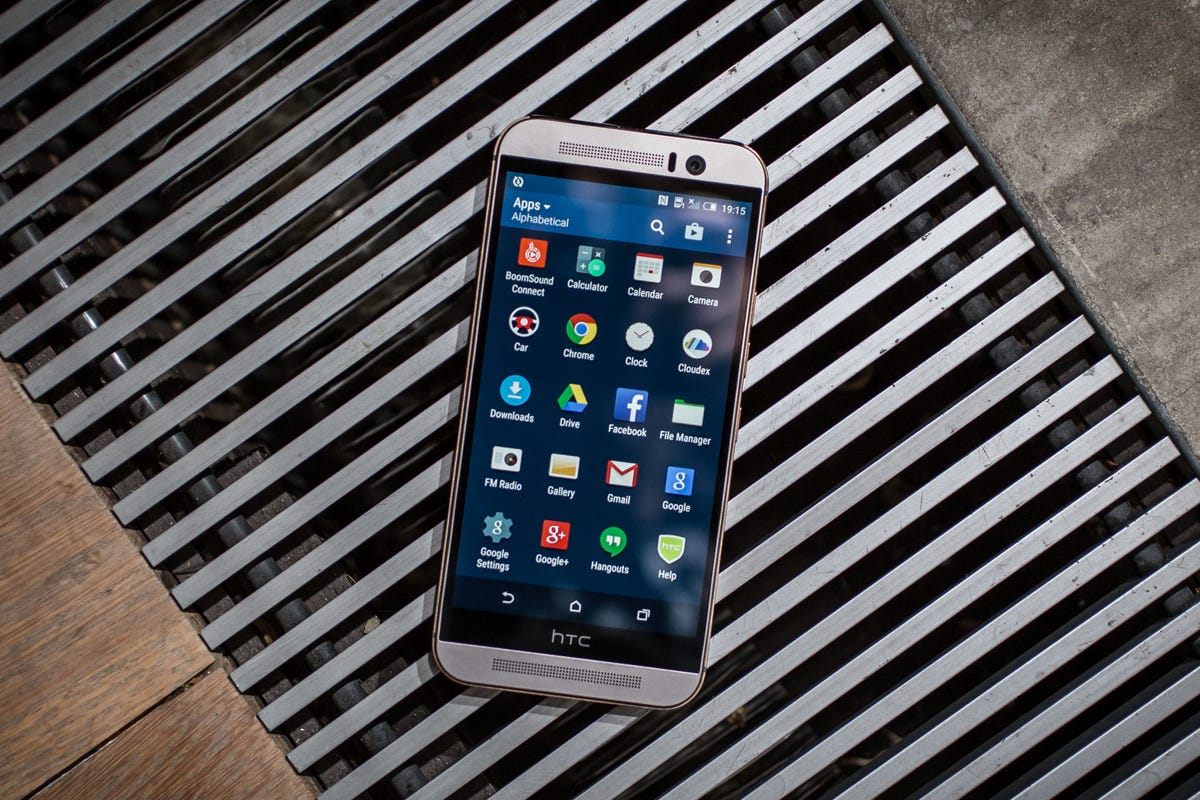
Andrew Hoyle/CNET
BARCELONA — HTC formally embarked on its mission to transform itself after unveiling not only a new smartphone, but also a fitness tracker and virtual reality headset.
The trio of products highlights the company’s desire to move beyond smartphones, following in the footsteps of larger competitors such as Samsung that boast a wider portfolio of gadgets for consumers. But HTC is expanding in its own way — preferring to partner with Under Armour for the Grip fitness tracker and Valve for the gaming headset Vive.
The two products come after HTC unveiled the HTC One M9, an updated version of its flagship smartphone with minor tweaks to the body and new software enhancements.
HTC’s announcement comes on a Sunday chock full of news from the likes of Nokia, LG, Huawei and others. Samsung is expected to unveil its next Galaxy S smartphone at an event later this evening, a day before the Mobile World Congress trade show officially kicks off here.
Barcelona braces for Mobile World Congress 2015 (pictures)




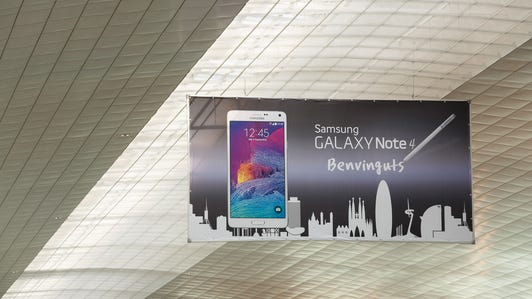

HTC’s event was of particular importance because its press conference was its chance to reinvent itself as a broader personal technology company. There’s a lot at stake with this gamble. Succeeding with a new product means another source of revenue and a fresh direction. Failure, however, could mean it gets stuck in the increasingly competitive smartphone business, one dominated by heavy hitters like Apple.
“It’s a new act of our opera,” said HTC Chairwoman Cher Wang, referring back to her oft-used analogy of HTC’s symphonic blend of design, hardware and software. “‘Utopia in Progress (the name of the event) represents the next step of how tech will touch every aspect of our world and ehance how we experience it.”
There’s good reason HTC is look beyond its comfort zone: the smartphone game has been particularly tough for HTC. The fourth-largest smartphone maker in the world in 2012, the company has fallen off the radar and is categorized in the “other” category of companies that no longer merit individual mention, according to IDC.
The desire to transform comes from recognizing that the growth in smartphones isn’t what it once was. Beyond Apple at the high end, there is fierce competition in the affordable smartphone segment between hot local start-ups like China’s Xiaomi or India’s Micromax, and other rivals like Lenovo’s Motorola, Huawei and ZTE.
“Showing u still got it when it comes to innovation is essential to the brand,” said Carolina Milanesi, an analyst at Kantar WorldPanel. “If they balance the financial side of the investment well, it might just work.”
Still, HTC is nowhere near abandoning the smartphone business, and its One M9 took center stage on Sunday.
M9: Subtle improvements under the hood
While the previous year’s One M8 stretched the amount of metal incasing the smartphone, the M9 saw only minor tweaks and improvements. The shape of the back is altered for a better grip, and the polished edges are gone. But the M9, especially in the gunmetal grey color, looks essentially like the M8.
That will make it a hard sell for a company whose defining attribute is its design acumen and attention to aesthetics.
The company said that it opted to keep what was working and refine some of the problem areas for M9. One issue is the reputation for a weak camera. The original HTC One and M8 both used an “Ultrapixel” camera that it argued let in more light for clearer photos. But the camera was critically panned and consumers didn’t understand why the phone only had 4 Ultrapixels. For the M9, the company utilized a more standard 20-megapixel shooter.


Now playing:
Watch this:
Hands-on with the sumptuous metal HTC One M9
2:38
HTC also added a 2,840 mAh battery to the M9, representing a slight improvement over the 2,600 mAh battery in the M8.
More of the improvements come in its Sense 7 user interface, which includes new ways to customize themes and a home screen widget that gives you a collection of specific apps depending on whether you’re at home, at work or on the go. The widget automatically chooses your collection based on the phone’s location.
Up close with the metal curves of HTC’s new flagship One M9 (pictures)
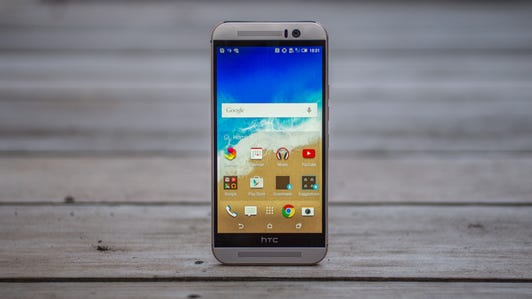

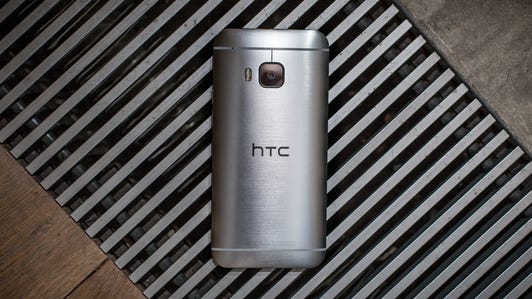

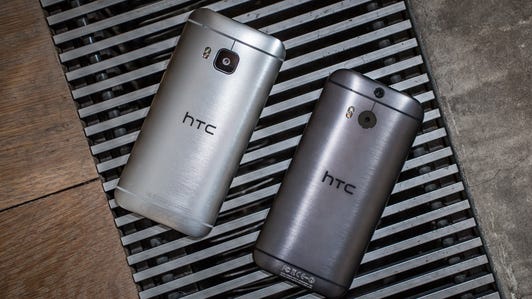

“With only slight changes to the overall design and some tweaks to the specs, the HTC One M9 isn’t the mobile revolution some may have been hoping for,” said CNET editor Andrew Hoyle. “It is building on an already stunning phone, though — one that we were extremely keen on — and completely overhauling an already good product isn’t always the right decision.”
HTC says it’s the third generation of its “iconic design” and believes it has stepped up the quality of the build. “M9 makes a statement: You demand the very best,” said Drew Bamford, head of the Creative Labs unit for HTC and responsible for the software on the phone.
Targeting athletes with Grip
After HTC identified fitness as an area that it wanted to get into, the company began talking with Under Armour in February. What started as a conversation about a licensing deal — HTC would build a product and Under Armour would slap its name on it — evolved into a deeper partnership in which both companies would collaborate more closely.


Ben Fox Rubin/CNET
Grip, which represents HTC’s second connected product following the October unveiling of its Re camera, was already in HTC’s pipeline when the two companies began talking. But HTC worked with Under Armour to make sure the product was integrated into UA Record, the fitness company’s digital health and fitness network, which boasts more than 50 million users.
HTC and Under Armour aren’t going after more casual consumers who tend to use activity trackers like a FitBit or Jawbone. Instead, it wants to target serious athletes who have a deeper investment in their fitness and exercise regimen.
“I’m not saying it’s for everyone,” said Robin Thurston, head of Under Armour’s digital fitness business. “It’s for a specific part of the market.”
The Grip has basic smartphone notifications and can control the music on your phone through a Bluetooth connection. It also has GPS capabilities, which would appeal to more serious runners or cyclists. It has a small touchscreen display that allows you to swipe across and up and down to navigate.
Some tight shots of the HTC Grip (pictures)






Jeff Gattis, head of marketing for HTC’s connected devices business, said the Grip allows the company to get into retailers that it traditionally hasn’t been able to tap, including the sporting goods stores.
More importantly for HTC, the Grip doesn’t represent a one-off product. “Our goal is to be extremely optimized with them as a partner,” Thurston said.
Like, Gattis said HTC and Under Armour plan on creating more devices together.
HTC jumps into virtual reality world
HTC’s investment into virtual reality, illustrated by its first prototype dev kit headset, called the HTC Vive, created in partnership with video game developer and digital distributor Valve, was sparked by a belief that the category represents the future of entertainment.


HTC
“This is a long-term commitment, like mobile phones 10 years ago,” said Claude Zellweger, who is in charge of coming up with new product concepts for HTC.
Like with Under Armour, HTC was looking for a big name partner in gaming and sought to work with Valve. “It has the highest street cred among game producers,” Zellweger said.
While the Vive is tethered to a PC via a 5-meter cable, it employs two tracking beacons — one on each side of the room — to detect its location and motion, and allows the wearer to not just move his head, but also get up and move around. The prototype has two 4-megapixel cameras that help detect objects around you so you don’t accidentally bump into them while wearing the headgear. The headset also comes with wireless controllers, allow you to control your immersive experience.
HTC is also partnering with content companies like HBO, Lionsgate and Google to bring more video to the headset.
Smartphone rival Samsung also has a virtual reality system, Gear VR, which incorporates Oculus technology with its Galaxy Note 4 smartphone as the display and brains of the system. But Gear VR is a stationary experience — you can move your head around, but you remain seated when watching the content. HTC is hoping to go further with its Vive.
“We will bring you a virtual reality experience no one has seen before with a groundbreaking partner in Valve,” CEO HTC CEO Peter Chou said.
The Vive dev kit will be publicly available in April. HTC said it would launch a commercial product by the end of the year.
For HTC, this represents a lot of new, different directions at once. The question is whether it can balance all of the products but still find a way to stand out with its trademark design acumen.
Given the competition, it will have to.



